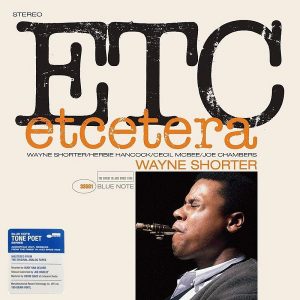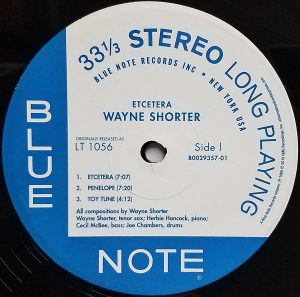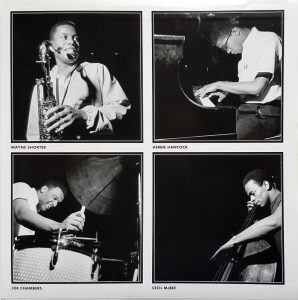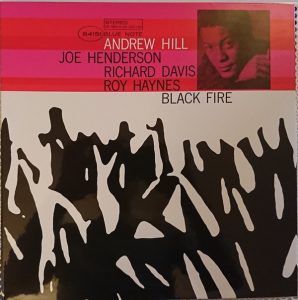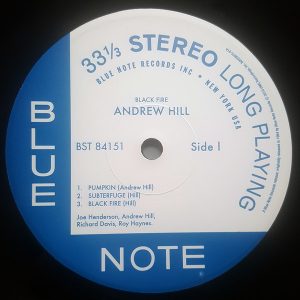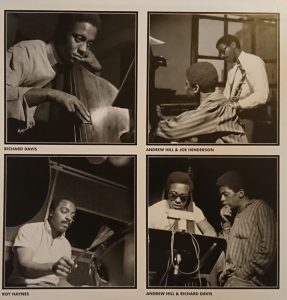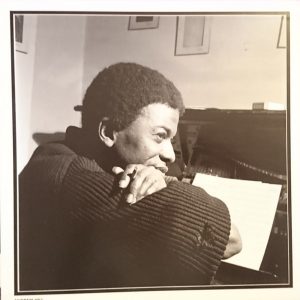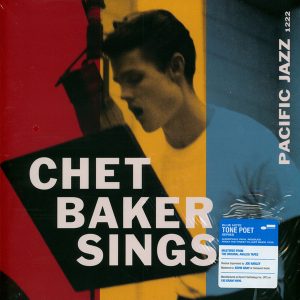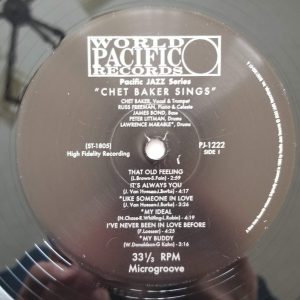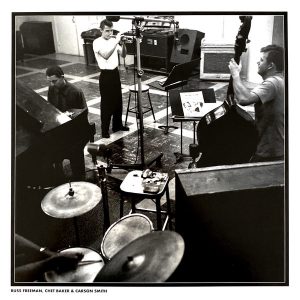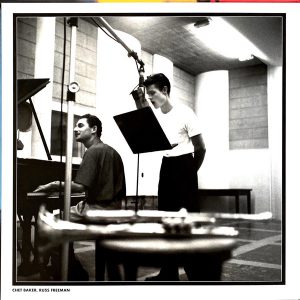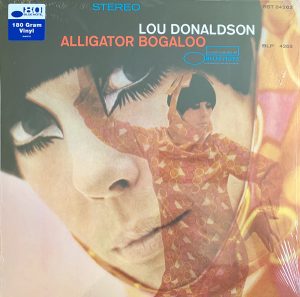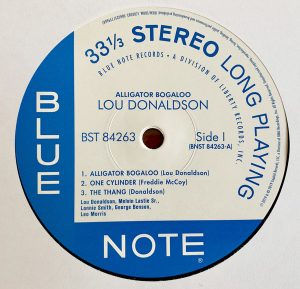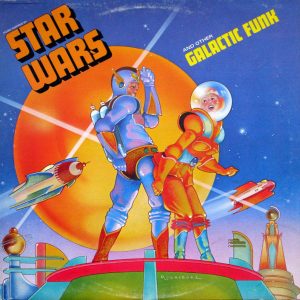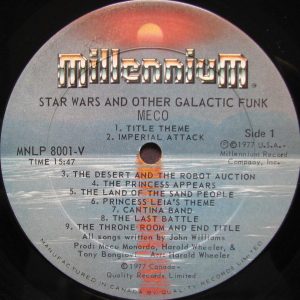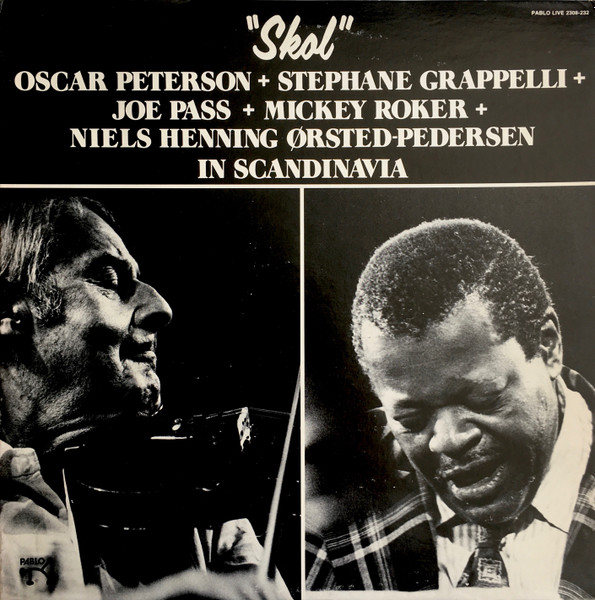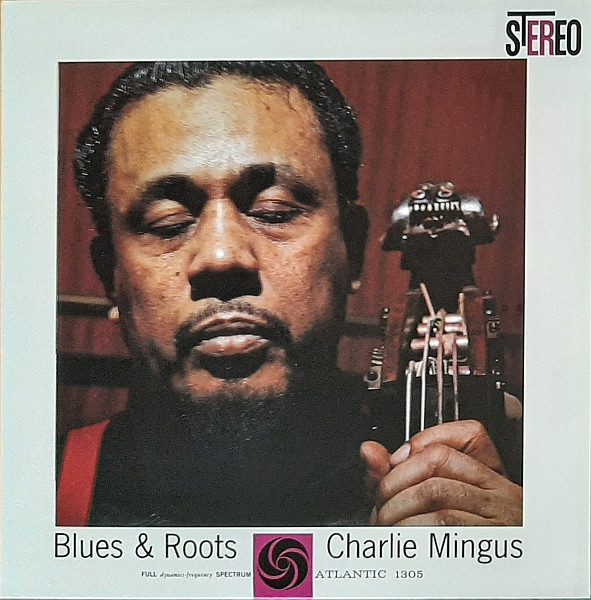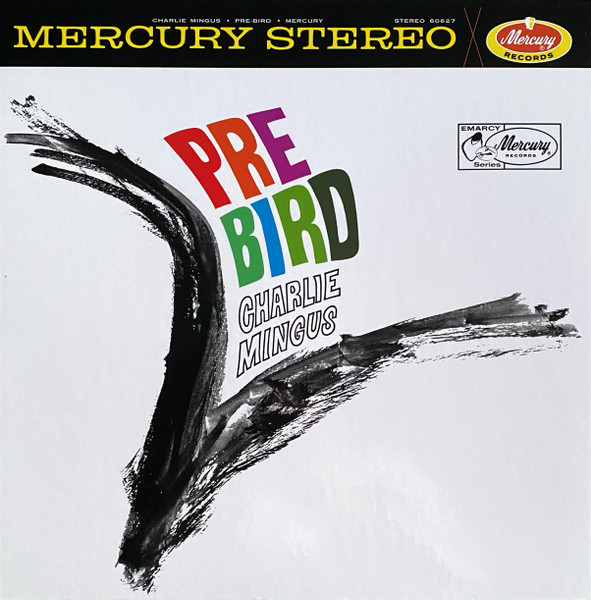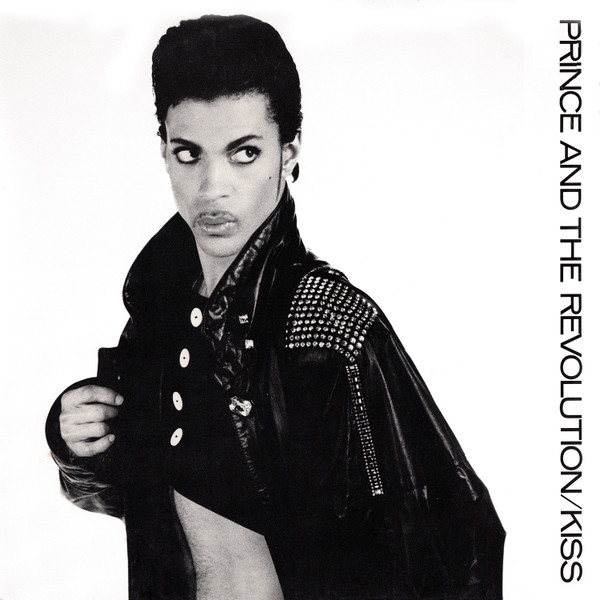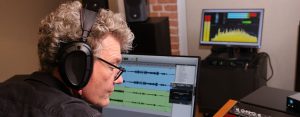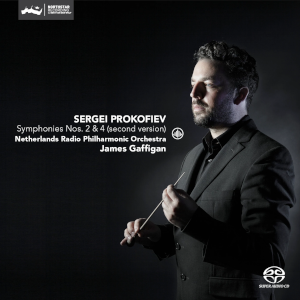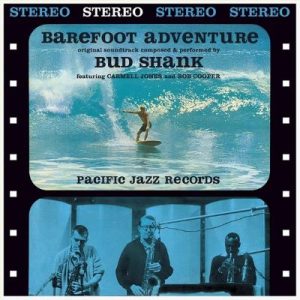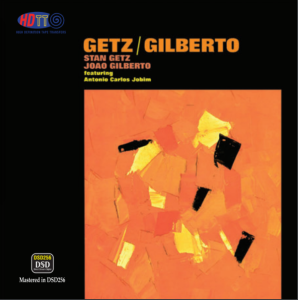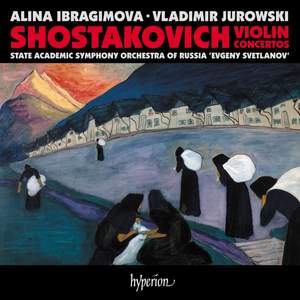This is an ongoing project by Claude Lemaire of Soundevaluations
"To B, or not to B-Note, that is the question"
"It's Poetry In Motion"
–Thomas Dolby
146. Wayne Shorter, Etcetera. Blue Note – LT-1056 (1980), Tone Poet Series – B0029357-01 (2019), 33 1/3 rpm. Genre: jazz, post bop, modal, free jazz flirtings.
One listen to ETC and it is hard to comprehend how this incredible Blue Note session recorded by Rudy Van Gelder in June 1965 in Englewoods Cliffs, New Jersey was originally shelved, only to be released fifteen years later for the very first time. Resurfacing in February 2019 as part of the terrific Tone Poet Series spearheaded by current Blue Note President Don Was and Joe Harley—producer and co-founder of Music Matters Ltd—this along with Chick Corea's Now He Sings, Now He Sobs [Solid State Records B0029363-01] were the first two LPs released. Shorter is joined by no other than Herbie Hancock on piano, Cecil McBee on bass, and Joe Chambers on drums—great statures of that era. No doubt influenced by Miles during this particular period, post bop and modal patterns, with flirts into free jazz coalesce throughout the five-track album. Now, after more than five decades, the music and performances still feel fresh. Having many Blue Notes—both original RVG DG monos and Classic Record reissues, and a few Music Matters 45 rpm—I can say that this Tone Poet is probably if not the best, then one of the best sounding Blue Notes I've heard. It still retains many of the signature RVG caracteristics—which are far from perfect but nevertheless serves as the blueprint for a Blue Note LP—such as great brass and snare presence along with a narrow-range piano sound, but Kevin Gray's magic touch succeeds in improving the sonic aspects on all fronts. It does not reach the same level of perfection as a DuNann' Contemporary recording but Gray's remastering reduces the gap significantly. What is striking is the sound of Shorter's sax situated on the left. His choice of EQ equally combines great tone, warmth, color, presence, breath, and a realism rarely encountered on a Blue Note to my knowledge. McBee's bass is also surprisingly solid and palpable, especially for a Van Gelder recording. Herbie's piano is much more natural and open including some overtones. Chambers' drums dance away throughout the tracks with agility, realism and dynamic power. The title-track starts well the album; further on an interesting dialogue converses between sax and piano, with snare syncopating military-style around them, and earning itself a powerful percussive solo exchanging fire between snare, cymbals, and hi-hat toward the coda where RVG's mic setup beautifully captures the room response. "Penelope" is the sole explorative ballad breathing air, with subtle snare brush strokes tenderly caressing the lithe piano teetering betwen consonance and dissonance. Side B is my favorite having the two longest tracks–"Barracudas" and "Indian Song" which the latter with its odd meter resembles and predates by a year Lalo Schifrin's "Theme from Mission Impossible"—where the modal rhythmic loops and free jazz forms permit Shorter greater range, and aggressivity. Mastered and lacquer cut at Gray's Cohearent Audio, and perfectly pressed on dead silent 180g by RTI in California. As if the all the above was not enough, the glossy gatefold sturdy jacket with beautiful B&W photography lining the inside is second to none!
147. Andrew Hill, Black Fire. Blue Note – BST-84151 (1964), Tone Poet Series – B0029975-01 (2019), 33 1/3 rpm. Genre: jazz, post bop, modal, minor avant-garde jazz aspirations.
Recorded in November 1963, and originally released the following April, Andrew Hill's Blue Note debut—the first of several for the label—was reissued in July 2019, as part of the seventh or so batch of Tone Poet releases, which averages about two LPs on a monthly basis. Though I didn't encounter any truly disappointing releases musically or sonically among the fourteen titles I've listen to so far, like the previous selection, this is also one that rose above the rest in my book. Dating approximately a year and a half earlier, studio sessions unsurprisingly were by RVG in Englewoods Cliffs, New Jersey. Hill is accompanied by 1960s icon that I much admire Joe Henderson on tenor sax, lesser-known bassist Richard Davis, and Roy Hanes on drums taking the place of Philly Joe Jones, originally booked for the sessions. Similar to the Shorter selection posted above, post bop dominates with modal and avant-garde subtly surfacing, leaning more towards cerebral than the typical hard bop Blue Note vibe. Each instrument is well captured and balanced between the occasional soloist. Typically Rudy is not recognized as getting good piano sound onto tape, resulting often in a closed-in or boxy sonic character. Thankfully, such is not the case on this occasion where we can appreciate Hill's harmonics and resonance with clarity. The double bass is muscularly well rounded and articulated—quite superior and surprising coming from a Van Gelder Blue Note recording which many times has a tendency towards bass emaciation. Haynes' drums display dynamics and realism. Kevin Gray at Cohearent Audio again does a superb remastering an cutting, combining warmth, tenor tone, great presence, drum and bass solidity, and soundstage dept that I'm convinced beats in every way the original RVG cutting and pressing–which I haven't heard. As usual, all visual aspects including Francis Wolff's wonderful photography are to the highest standards in the industry and above.
148- Chet Baker, Chet Baker Sings. Pacific Jazz – PJLP-11 (mono) (1954), 10", PJ-1222 (1956), 12" LP, Tone Poet Series – B0031300-01 (2020), 33 1/3 rpm. Genre: cool jazz, West Coast jazz, vocal jazz, swing.
Originally recorded in February 1954 at the Capitol Studios in Hollywood, California, and released as an 8 track, 10-inch album later in May, the label would re-release it under the same title—while adding 6 newly recorded songs—on a 12-inch format following Baker's growing popularity. Founded in 1952 by producer Richard Bock and drummer Roy Harte, Pacific Jazz—later renamed World Pacific in 1957—specialized in what was coined West Coast jazz in relation to its geographic location, in contrasts with the lesser-referenced East Coast jazz, better known as hard bop hailing from New York. The latter sessions date from July 1956 and were recorded at the Forum Theatre in Los Angeles, California. Joining him on the first date are Carson Smith and Joe Mondragon on bass, Bob Neel, Shelly Man, and Lawrence Marable on drums, while on the second date are Jimmy Bond on bass, Peter Littman on drums—while Russ Freeman on piano and celesta appears on both sessions. The fourteen tracks are a mixture of smooth swinging cool jazz and soft playing ballads including his signature interpretation of "My Funny Valentine" with Chet waltzing between his—muted at times—trumpet and what is truly a beautiful melting mélange of melancholic and angelic voice. The general feeling is one of total relaxation, accompanied by a purity of tone encompassing not only his dry vocals and trumpet but also the plump yet agile bass, piano and celesta, and drum ride cymbal establishing the rhythmic vibe. Engineering is credited to Allan Emig and Phil Turetsky without further precision on who did what and when. One thing is certain is that the recording method chosen, equipment quality and placement, and intimate sounding venue stood the test of time, and proves once more that this Golden Age period was blessed by keen-eared personnel as well as musicians who knew not only how to play but how to listen to one another. Kevin Gray at Cohearent Audio accompanied by Joe Harley did an outstanding all analog job transferring, remastering, and cutting the lacquer to provide us with what I believe is the best mono LP reproduction I've ever heard on my system! Silently pressed on 180g by RTI, the sound envelope is warm, intimate, stress free, non-compressed, perfect from bottom to top tonal balance, and an all too rare cohesion emanating from the quartet as if speaking with one voice. The best Tone Poet release yet. Perfect packaging and presentation. Like the previous selection, I haven't heard the original Pacific pressing but I cannot imagine how it could compete let alone surpass this new version. Grab it while you still can, you won't regret it.
149. Lou Donaldson, Alligator Bogaloo. Blue Note – BST-84263 (1967), Blue Note 80 Vinyl Reissue Series UMe – 00602577596681 (2019), 33 1/3 rpm. Genre: soul-jazz, jazz-funk, soul-blues.
Contemporaneous with the Tone Poet series presented above, the Blue Note 80 Vinyl Reissue Series as the name implies was created to celebrate the label's 80th anniversary founded in 1939. Don Was and Kevin Gray reprise their respective roles while Cem Kurosman—Sr. Director, Publicity & Digital Marketing at Blue Note Records/Capitol Music Group—replaces I presume, Joe Harley's corresponding function. Releases are scheduled at a rate of three per month instead of Tone Poet's rate of two, as well as priced accordingly a bit lower due to a very basic and obviously cheaper visual presentation, such as no glossy gatefold and common paper inner-sleeves. They are also all analog unless an analog source is unavailable, which means that the main sonic difference with the Tone Poet series is due to the pressing being done at Optimal Media GmbH in Germany instead of RTI in California. Based on the seven or so 1980-series' LPs I've listened to so far, my general impression and conclusion—putting aside any visual considerations–is that the pressing plant does make a sonic difference, and in this context strongly favors the more expensive RTI releases. It is easily and mostly apparent in the treble texture purity where there appears to be more grain or less refinement in the drum cymbals, brass and piano overtones, and overall less warmth, and more midrange whitening or confusion. For whatever reason this Lou Donaldson LP seems to escape—up to a certain extent—the negative traits I just enumerated above, making it worthy for inclusion on this List. Perhaps this type of jazz, bending more towards funky groovy soul-blues, lends itself better or is not as demanding than a modal or hard bop recording where subtlety takes precedence over the former's fun factor. Indeed our groovy Alligator is warm and fat in the bass without any lower treble brightness—a common tendency in many Blue Notes unfortunately. I was even surprised that Van Gelder was capable of getting this kind of sound on tape; either that or Gray really twisted the knobs on this one. I don't have an original 'Liberty' pressing but I'm pretty sure it would not be as good nor as bassy-groovy as Gray's remastering and cutting. Donaldson is on alto, with Melvin Lastie, Sr. on cornet, Lonnie Smith on organ, George Benson on guitar, and Leo Morris on drums.
And Now for Something Completely Different!
150. Meco, Music Inspired by Star Wars and Other Galactic Funk. Millennium, Casablanca – MNLP-8001, Millennium – MNLP-8001-V (Can.) (1977), 33 1/3 rpm. Genre: Orchestral space disco, big band swing, klezmer jazz, marching band fanfare, funk.
Dominico Monardo—better known as Meco Monardo or simply "Meco"— first made his mark when he arranged and, along with Tony Bongiovi, Jay Ellis, and Harold Wheeler, produced Gloria Gaynor's smash disco hit "Never Can Say Goodbye" [MGM Records M3G 4982] in October 1974, launching DCA—the Disco Corporation of America in the early stages of the discomania movement. Moving along the timeline, Meco was mesmerized by the theatrical release of Star Wars in late May 1977. So much so that he presented the idea of a discofied version based on composer and conductor John Williams' movie soundtrack to Casablanca Records' founder and music executive Neil Bogart, signing on to the newly-formed subsidiary label Millennium. Lasting nearly 16 minutes, the Star Wars medley occupies the whole first side. The musical themes are listed on the label but do not necessarily follow the movie order or the original score sequence. Putting aside the corny sound effects imitating the R2D2 robot and the laser weapons—which I could easily do without in a perfect world—the orchestral arrangements and theme pacing are extremely well executed. Following the grandiose "Title Theme" intro, the energetic tempo of "The Imperial Attack" drives the spacey-disco adventure along the way with never a dull moment in sight. "Princess Leia's Theme" temporarily relaxes the intensity. The 1930s-klezmer swing inspired "Cantina Band"—borrowing from Benny Goodman's famous "Sing, Sing, Sing" hit—lightens the mood, before "The Last Battle" and "The Throne Room & End Title" reaches its royal epic conclusion. Within the medley, there are a few key breakdown movements facilitating mixing opportunities for deejays. The second side comprising three uninterrupted tracks—"Other", "Galactic", "Funk"—is completely different in style, and resembles what you could expect in a marching band type parade, relying heavily on a mix of fanfare drums, percussion, and brass instrumentation with a tinge of funk and disco thrown in of course. Arranged by Harold Wheeler and produced by Wheeler, Monardo, and Bongiovi. Recorded at MZH Studio in Midtown Manhattan by engineer Harvey Hoffman and remixed by Bongiovi. Joseph Gastwirt cut the original lacquer at Masterdisk in NYC. The original US pressing was done by the Columbia Records Pressing Plant in Santa Maria, California. The overall sound is very good but I prefer my first press Canadian copy manufactured and distributed by Quality Records Limited, cut at The Lacquer Channel Limited—a facility opened by Phase One Studios in Toronto, Canada which was the first one I bought right when it came out in July 1977. The Can. pressing is punchier in the lows' bottom and kick, and richer in the low mids and treble sporting an excellent tonal balance and drive.
For more from Claude Lemaire go to his blog...
http://soundevaluations.blogspot.ca/




